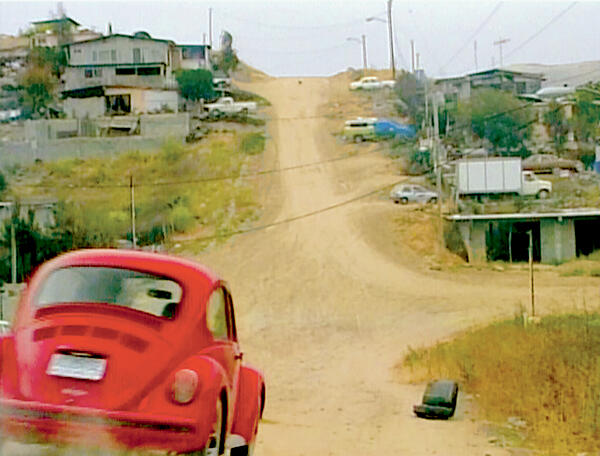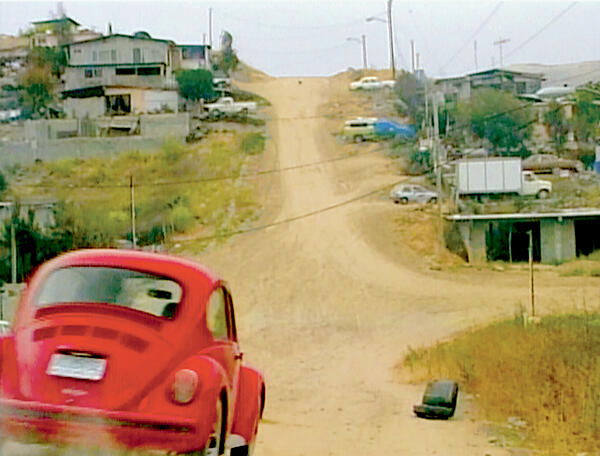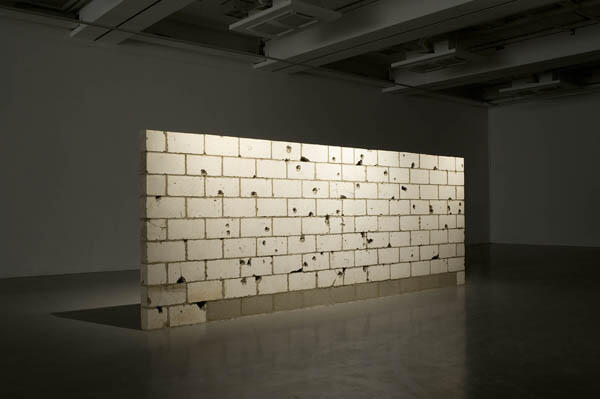_México Inside Out: Themes in Art Since 1990_
Modern Art Museum of Fort Worth
México Inside Out: Themes in Art Since 1990 at the Modern Art Museum of Fort Worth ranks as the largest exhibition of contemporary Mexican art in the U.S. in over a decade.

Organized by visionary curator Andrea Karnes with logistic support from Assistant Curator Alison Hearst, this landmark show displays over 60 works, including five new for the Modern space, from nearly two dozen Mexican artists or “émigrés”, who live and work around Mexico City, but show in the world’s art centers from New York, London, Venice, to Moscow, and Seoul.
The generations of well educated Mexico-based artists born after 1960 who matured in the 90s express their sociopolitical-cultural critiques unfettered by past restraints. The state-sponsored Social Realists who decorated government buildings with propagandizing historic scenes have almost no descendants among them. Conceptualism, with European roots, but deeply transformed with the quotidian experience of Latin America, exalting the process of the mind over the object, predominates. This is the case of leading conceptual artist Abraham Cruzvillegas, who never uses the found object as it is normally viewed, but in the context of a sculpture where the found object takes on an abstract meaning for the viewer.
With courage, wit, and unstinting creativity, the works exhibited in “Mexico Inside Out” touch on regional and national concerns about borders, social disorder, violence, obsolescence, modernity, revolution, and urban disintegration. Hence, the meaning of the show’s contrarian title – México Inside Out - which references the local themes engaged by the works that connect outward to global issues.
The Mexican brand of conceptualism is well served by the first gallery devoted to the photography, mixed media, and computer generated sports prints of Gabriel Orozco, a seminal influence of prodigious output. His early 90s color snapshots of sculptural urban detritus from nomadic street explorations like a poetic close up of a deflated soccer ball cupping stagnant water, suggesting obsolescence, paved the way for later artists to use commonplace, banal objects in art. So, in Vulnerabilia (casi ), Jonathan Hernández juxtaposes multiple newspaper photos of handshakes among world leaders to portray theatrics of politics and inconsistent promises. In The Messiah Complex, Joaquin Segura captures in meticulously detailed charcoal drawings images of confiscated or failed homemade bombs contained in ordinary sandwich bags, a fanny pack, a backpack that link religious extremism and violence to underlying terrorism.
Working in the tradition of Marcel Duchamp, Teresa Margolles remembers the drug cartel victims from her Culiacán birthplace, home to México’s $25 billion narco- trafficking industry, with an emblematic monument to the drug wars. Her minimalist installation , Muro Baleado/ Shot Wall (Culiacán ), never before seen in the U.S., which curator Andrea Karnes calls a "major work in her career," is the original, nearly 7’ high, bullet-gouged cinder block wall behind which two Culiacán police officers lost their lives. “Every person is a tragedy,” says the winner of the international Artes Mundi prize, whose works evidence her preoccupation with death.
In Biographia Literaria, Samuel Taylor Coleridge , the English poet and critic, describes the imagination as a shaping, modifying power able to synthesize perceptions into a new whole. Conceptualist Abraham Cruzvillegas employs this transformative power in his chilling over 5’ tall, conical sculpture, El JJ, named for a drug lord’s second-in-command. Comprised of various size coconuts with long dangling hair attached, it was made for an exhibition honoring prize-winning Chilean writer Roberto Bolaño, whose last novel, 2666 , fictionalized the murders of hundreds of women and girls in Ciudad Juárez. The everyday “cocos” (Spanish for “coconuts” or “heads”) strung from the ceiling like a bunch of grapes poignantly evoke sculls of Victorian and Mexican memento mori.
In writing of Picasso’s masterpiece Guernica, critic Donald Kuspit theorizes Picasso applied “esthetics against barbarism” to survive this atrocity. Similarly, in Artemio’s installation subtitled ( Portrait of 450 Murdered Women in Ciudad Juárez ), the artist highlights not the graves from this barbarism, but the grave dirt dug for this femicide of Maquiladora workers. A huge mound of 27,000 kilograms of Juárez dirt – the equivalent of the total of the average body weight of the 450 female victims – is transformed into a timeless ancient burial site reaching the 16’ high gallery ceiling.
Texas-born Thomas Glassford raises conceptualism to monumental heights with three impressive new works, which utilize “readymades,” the concept of elevating ordinary, manufactured objects to the status of art made famous by conceptual artist Marcel Duchamp. Dangler, a ceiling suspended, wreath of commonplace, prefabricated cafeteria dishes anchors these works in the largest gallery. On side walls, free-standing structures, and room center , used wooden broomstick handles from daily life form a post-minimalism grid of serially repeating cadres of faded pink, blue and green broom handles standing on triple deck library shelves ( Untitled Collection ) or held fast in columns by steel and Lucite ( Stela 1K). The sheer number of endlessly repeating banal broomsticks suggest a rigid, trapped depersonalized society in economically challenged México.
Few paintings populate the show. British-born Melanie Smith drew inspiration for her haunting paintings on Plexiglas in her Vanishing Landscape series from her video, Spiral City , made with Rafael Ortega of a helicopter ride near the Mexico City airport. Smith’s companion paintings mirror the helicopter’s ascending aerial views -- from the distinctive street grid to a city almost obliterated by noxious smog as symbols of urban disintegration or a nation’s.
A third of the artists have created entertaining videos with implicit sociopolitical statements. In Gustavo Artigas’ inventive two-part film Rules of the Game, a game of ball by a border fence and a soccer and basketball game played simultaneously on the same court illustrate Artigas’ themes about the possibilities of separation or integration of teams, societies, and cultures despite competing power structures.
Belgium-born conceptual artist Francis Al̎ÿs tackles the politics of U.S. – Mexican relations in his hilarious iconic video, Rehearsal 1/ (Ensayo I ). As a rehearsing brass band plays on the sound track, a bright red VW beetle leaps into the frame and struggles to climb a steep dirt road in an impoverished shantytown near the Mexican - U.S. border. When the musicians stop to tune or talk, the car slides backwards down the hill. The music starts again and so does the car. This repeated Sisyphean attempt and failure to complete an act at the whim of a distant band turns into a droll metaphor for México’s ambivalent progress toward modernity with vacillating help from a U.S. partner.
On the Modern grounds, a new, mixed media sculptural intervention by the 3-person collective, Tercerunquinto, greets drivers at 4 intersecting streets. Its 6.5’ gray block lettering carves out MALA MEMORIA, which translates as poor memory . A fitting introduction to the important, unflinching themes perpetuated in the Modern’s brave, comprehensive retrospective of contemporary Mexican art from the 90s to the present day.
The show also includes works by Eduardo Abaroa, Edgardo Aragón, Minerva Cuevas , Daniel Guzmán, Damián Ortega, José Jiménez Ortiz, Gabriel Kuri, Miguel Monroy, Yoshua Okón, Naomi Rincón-Gallardo, Idaid Rodríguez, and José Antonio Vega Macotela.
-
 Rehearsal I (Ensayo I), 1999–2001
Rehearsal I (Ensayo I), 1999–2001
Video installation: video (29 minutes, 25 seconds), And ephemera
Dimensions variable
In collaboration with Rafael Ortega -
 Muro Baleado/Shot Wall (Culiacán), 2009
Muro Baleado/Shot Wall (Culiacán), 2009
115 concrete blocks with bullet holes- 83 7/8 x 156 x 6 inches (213 x 396 x 15.2 cm) -
El JJ, 2011
Coconuts, artificial hair, steel wire, and glue - 63 x 33 1/2 inches (160 x 85 cm




